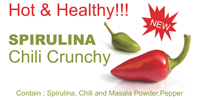Nutrition of the future for the city of the future
The whole process of assimilation which weighs you down - this
occupies so much of a person's time and energy - that should be done
beforehand, and then one should be given something which is immediately assimilable, like what they are doing now with vitamin pills and proteins which can be assimilated directly, nutrition basics which are found in one thing or another and which are not bulky. 
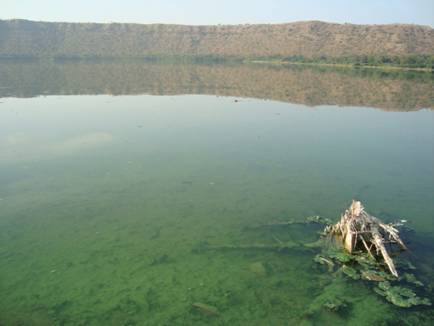
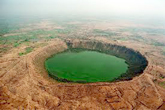
Spirulina - Super nutritional, Health & Energy booster
What is spirulina?
Spirulina (Arthrospira platensis) is a tiny blue-green algae in the shape of a perfect spiral coil. Biologically speaking, it is one of the oldest inhabitants of the planet. Appearing 3.6 billion years ago, it provided an evolutionary bridge between bacteria and green plants. This water plant has renewed itself for billions of years and has nourished many cultures throughout history, in Africa, in the Middle East and in the Americas. Spirulina grows naturally in mineral-rich alkaline lakes which can be found on every continent, often near volcanoes. The largest concentrations of spirulina today can be found at Lake Texcoco in Mexico, around Lake Chad in Central Africa and along the Great Rift Valley in East Africa.
“Let your food be your medicine
And your medicine your food”
- Hippocrates, 460-c. 370 BC)
Spirulina is called a super food because its nutrient content is more potent than any other food.
Many of the essential nutrients needed by our bodies are concentrated in spirulina. It is comprised of at least 60% all-vegetable protein, essential vitamins and phytonutrients such as the rare essential fatty acid GLA, sulfolipids, glycolipids and polysaccharides.
60% easy-to-digest complete vegetable protein without the fat and cholesterol of meat. Spirulina is a low-fat, low-calorie, cholesterol-free source of easily-digestible vegetable protein containing all the essential amino acids that cannot be produced by the body but are needed to synthesize the non-essential amino acids. Spirulina has no cellulose in its cell walls and is therefore easily digested and assimilated.
Natural Beta Carotene (provitamin A)
Spirulina is the richest source of natural beta carotene, ten times more concentrated than in carrots. Natural beta carotene is superior to the synthetic variety because the human body converts beta carotene to Vitamin A only as needed; vitamin A will therefore NOT build up in the body and become toxic. Beta carotene is a very important antioxidant. Several studies have indicated that foods rich in beta carotene and Vitamin A reduce the risk of cancer.
Gamma-Linolenic acid (GLA)
This rare essential fatty acid in mother's milk helps develop healthy babies. GLA is the precursor to the body's prostaglandins, master hormones that control many functions.
Spirulina is the only known food, other than mother's milk, with a concentrated source of GLA.
The best natural iron supplement
Iron is essential to build a strong system, and yet iron deficiency is the most common mineral deficiency. Studies show that the iron in spirulina is absorbed 60% more efficiently than from iron supplements.
High in Vitamin B-12 and B Complex.
Spirulina is the richest source of B-12, richer than beef liver. Because B-12 is the most difficult vitamin to obtain from plant sources, vegetarians have taken to spirulina. B-12 is necessary for the development of red blood cells.
Phytonutrients
The polysaccharides in spirulina are easily absorbed with minimum intervention of insulin. Phytonutrients provide quick energy without any ill effect on the pancreas.
Sulfolipids in blue-green algae can prevent viruses from attaching to cells or penetrating them, thus preventing viral infection; they are ‘remarkably active' against the AIDS virus, according to the NCI.
Phycocyanin is the most important pigment in Spirulina; it has both magnesium and iron in its molecular formation and therefore may be the origin of life, common to both plants and animals. Studies show it affects the stem cells found in bone marrow. Stem cells are essential to both white blood cells that make up the cellular immune system and red blood cells that oxygenate the body.
Chlorophyll is known as a cleansing and detoxifying phytonutrient. Spirulina contains 1% chlorophyll, among the highest levels found in nature, and the highest chlorophyll-A level.
Carotenoids are a mixed carotenoid complex functioning at different sites in the body and working synergistically to enhance antioxidant protection.
How to use Spirulina

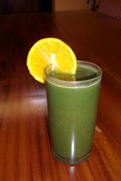
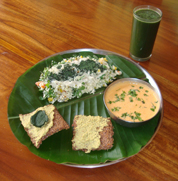
Spirulina is a perfectly safe natural food which provides quick energy and nourishment.
Spirulina powder can be added to fruit or vegetable juices or to dishes to enhance nutritional content. It is tasty in soups, salads, pasta and breads or mixed with yogurt.
Spirulina Crunchy are nice to eat as a snack or as a seasoning on your dishes, bread or salads.
Special tip: make a fresh lemon juice, add a teaspoon of spirulina ,Stir well and drink it straight away. The vitamin C (spirulina doesn't contain vitamin C) will help to absorb the nutrients like Iron,
Do not cook spirulina, as this affects its nutritional value.
Spirulina capsules are convenient to take at any time of the day; digestion takes about one hour.
Dosage
Data from long-time consumption and scientific evidence both suggest that 1-5 grams a day result in significant health benefits. Take Spirulina every day for best results. A frequently-asked question is whether one can take too much spirulina. Spirulina is a safe natural food with no side effects. Some people take 10 grams up to three times a day.
Spirulina nutritional composition
| General Analysis | |
| Protein | 60% |
| Lipids (fats) | 5% |
| Carbohydrates | 25% |
| Minerals (Ash) | 7% |
| Moisture | 3% |
| Protein | 60% |
| Values (per 100g spirulina) | |
| Energy | 387Kcal |
| Phycocyanin | 1.37mg |
| Total caroteniods | 0.19g |
| Chlorophylls | 0.97g |
| Vitamin B12 | 16.41ug |
| Gamma Linolenic Acid | 0.02g |
| Iron | 37.73mg |
Note: This profile may vary slightly, depending on production factors
Information is provided for informational purposes only and is not meant to substitute for the advice provided by your own physician or other medical professional.
Auroville and Spirulina
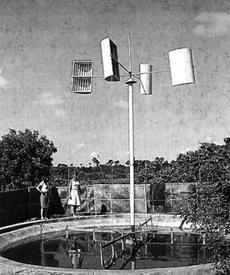

Already in the 1970s, Aurovilians Bob and Deborah Lawlor started a small scale algae farm in Auroville's Success community with a mixture of green algae, mostly chlorella and scenedesmus. In their attempts at growing spirulina, they found that after a few weeks indigenous varieties of the chlorella species outgrew and replaced the original strain.
Although their project was very basic and operated with simple means, it was one of the first experimental spirulina farms worldwide, and even now is considered to have been of great value. So much so, that it is mentioned in the books written by Ripley D. Fox (the spirulina pioneer for the last decades).
Another Aurovilian, old-timer Jim De Vries, was experimenting with chlorella farming at La Ferme around 1978. Jim used to pump the water with chlorella onto the rooftops of the buildings around the ponds
In the beginning of the 1990s, the late Swiss Bonaventura Chanson founded Simplicity with the vision of starting a spirulina farm there. He collected a lot of info and did various laboratory scale experiments pertaining to spirulina production.
Bonaventure also introduced spirulina for consumption within the community. After Bonaventura’s passing, Hendrik van Poederooijen (from the Netherlands) who presently runs the farm, decided together with Tejas Joseph to make Bonaventura’s vision of a Spirulina farm in Auroville come true, and started the project with an interest-free loan given to the project by the Auroville Health Centre. Having been located near the beach for years, in February 2008 the foundation stone was laid for the new Simplicity Spirulina Farm at Windarra community in Auroville’s Green Belt.
Why spirulina in Auroville?

It is but natural that the “best food for the future“ would be cultivated in the ”City of the Future”. Moreover, the hot tropical climate in Tamil Nadu, south India, is perfect for spirulina cultivation. So much so that some strains of spirulina can be found naturally growing there. And indeed, spirulina appears to be the ultimate source of nutrition available to mankind today. As stated by NASA:"The Nutritional value of 1kg spirulina is equivalent to 1,000kgs of assorted fruits and vegetables".
In order to produce 1 kg of spirulina very little water is needed (the only significant loss is through evaporation) and even brackish or alkaline water, unsuitable for agriculture, can be used. Growing spirulina also requires very little surface area of land, with the further advantage that the land can be marginal, unusable and non-fertile. Spirulina protein uses 1/3 of the amount of water needed to grow soybeans and only 1/50th of the water needed for beef protein. Spirulina protein needs 20 times less land than soybeans and 200 times less than is required for beef production. Spirulina can help in the struggle with global warming as it fixes carbon and produces oxygen.




 Spirulina French Leaflet
Spirulina French Leaflet Spirulina German Leaflet
Spirulina German Leaflet Spirulina Italian Leaflet
Spirulina Italian Leaflet Spirulina Spanish Leaflet
Spirulina Spanish Leaflet Spirulina Dutch Leaflet
Spirulina Dutch Leaflet Spirulina Russian Leaflet
Spirulina Russian Leaflet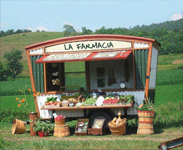
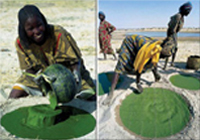
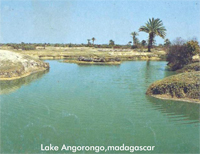
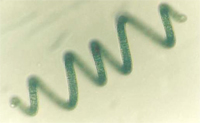
 Lab Reports
Lab Reports
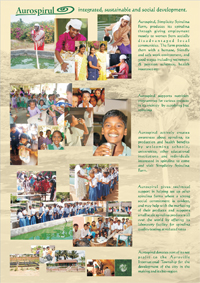
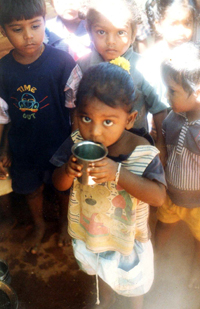
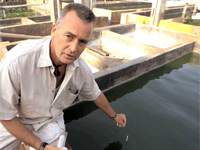 Farming the Blue
Farming the Blue